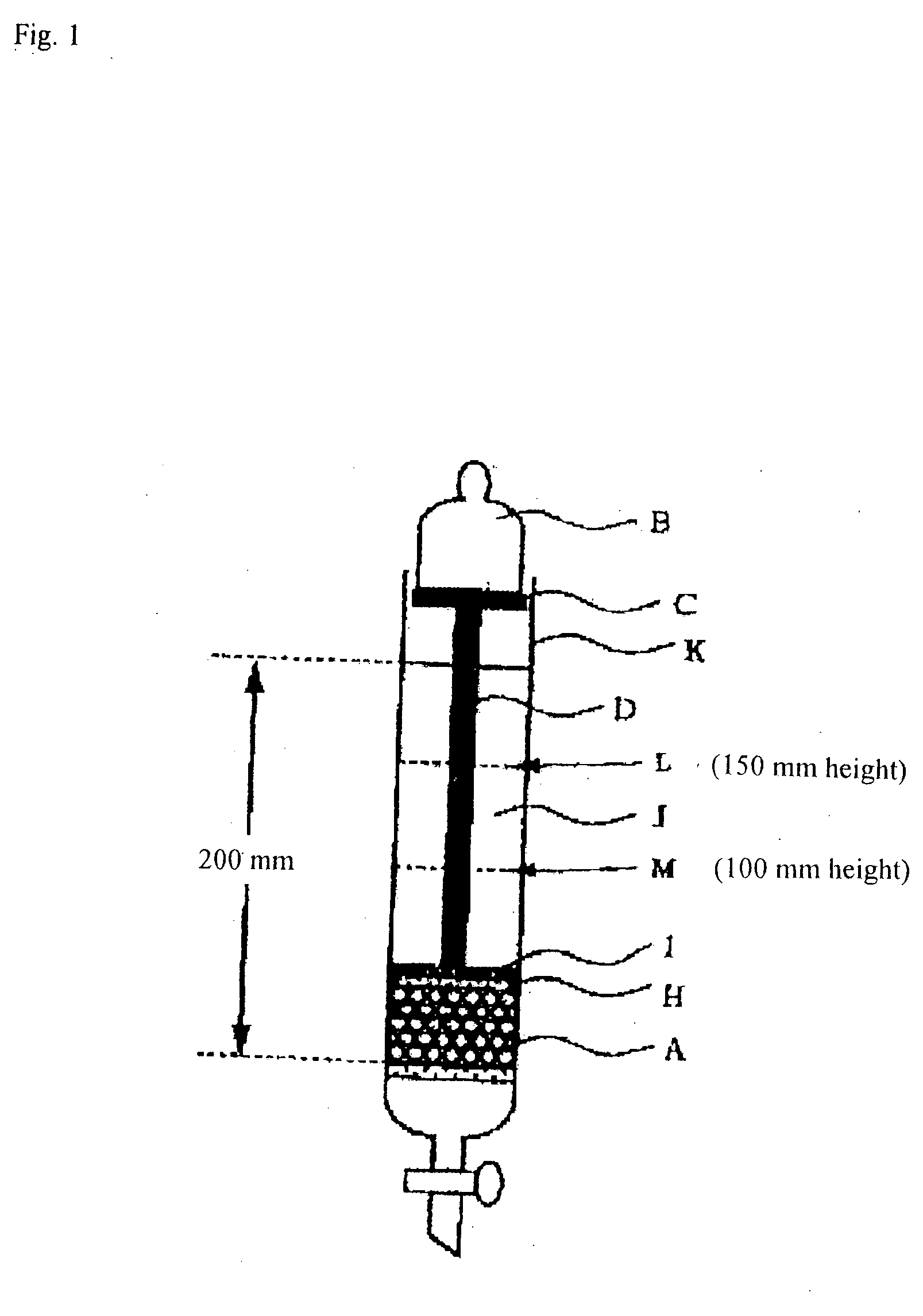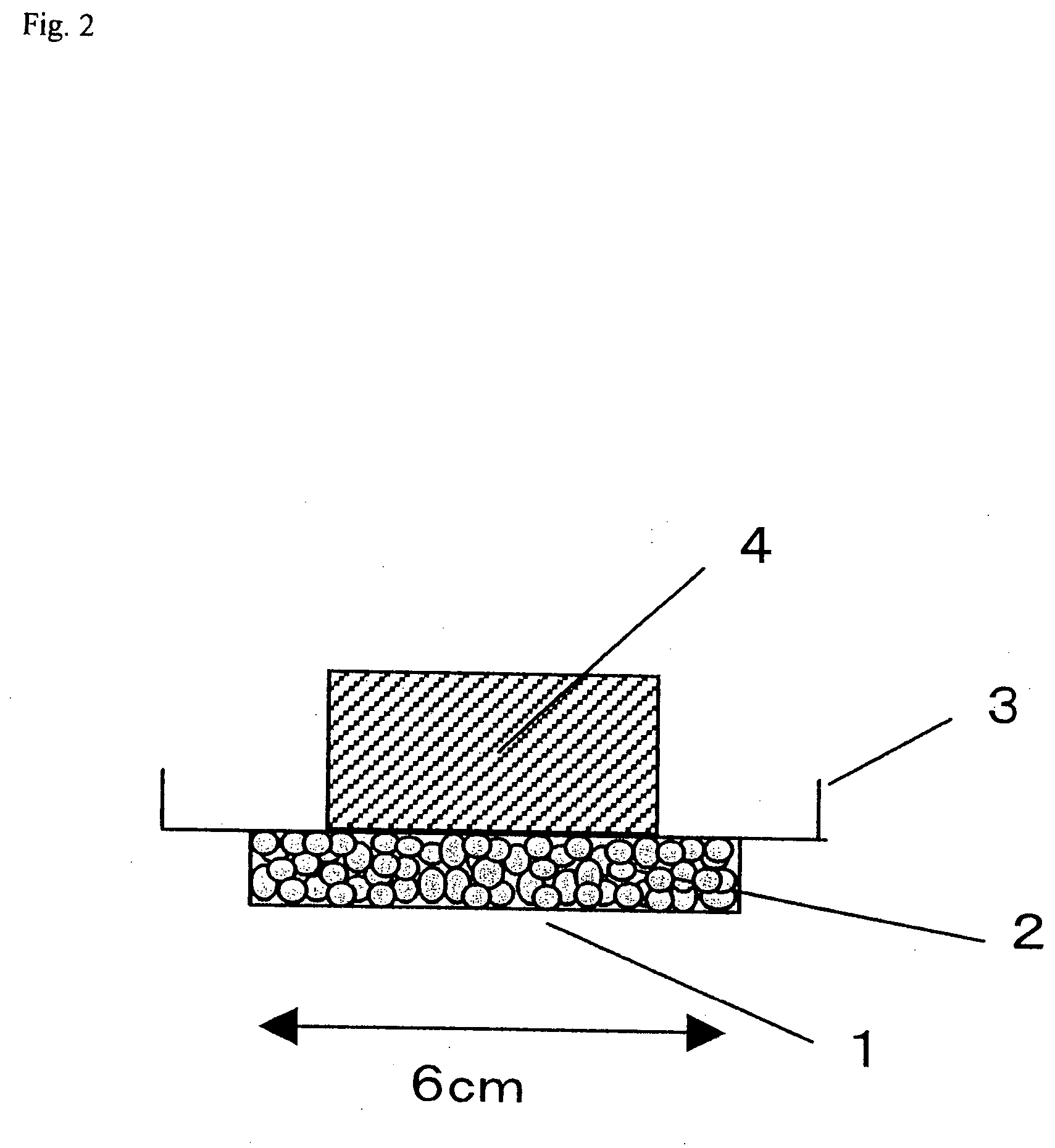Water-absorbing agent and production process therfor, and water-absorbent structure
a technology of water-absorption agent and production process, which is applied in the direction of chemical liquid solidification, chemical/physical processes, undergarments, etc., can solve the problems of weak cohesion strength among cellulose fibers, insufficient absorption properties, and insufficient water-absorption structures, etc., to achieve excellent shape-maintaining properties and excellent absorption capacity
- Summary
- Abstract
- Description
- Claims
- Application Information
AI Technical Summary
Benefits of technology
Problems solved by technology
Method used
Image
Examples
referential example 1
[0313] In a reactor as prepared by lidding a jacketed stainless twin-arm kneader of 10 liters in capacity with two sigma-type blades, a reaction liquid was obtained by dissolving 0.08 mol % of polyethylene glycol diacrylate (average molecular weight: 487) in 5,500 g of aqueous sodium acrylate solution having a neutralization ratio of 71.3 mol % (monomer concentration: 38 weight %). Next, this reaction liquid was degassed under an atmosphere of nitrogen for 30 minutes. Continuously, 2.9 g of ammonium persulfate and 0.08 g of L-ascorbic acid were added thereto while being stirred, and then the reaction was started after about one minute. Then, the polymerization was carried out at 20 to 90° C. while the resultant formed gel was pulverized, and a crosslinked hydrogel polymer (1) was taken out after 30 minutes from the start of the polymerization.
[0314] The crosslinked hydrogel polymer (1) as obtained was pulverized wherein its diameter was not larger than about 5 mm. This pulverized c...
referential example 2
[0316] In a reactor as prepared by lidding a jacketed stainless twin-arm kneader of 10 liters in capacity with two sigma-type blades, a reaction liquid was obtained by dissolving 0.05 mol % of polyethylene glycol diacrylate (average molecular weight: 487) in 5,500 g of aqueous sodium acrylate solution having a neutralization ratio of 71.3 mol % (monomer concentration: 38 weight %). Next, this reaction liquid was degassed under an atmosphere of nitrogen for 30 minutes. Continuously, 2.9 g of ammonium persulfate and 0.08 g of L-ascorbic acid were added thereto while being stirred, and then the reaction was started after about one minute. Then, the polymerization was carried out at 20 to 90° C. while the resultant formed gel was pulverized, and a crosslinked hydrogel polymer (2) was taken out after 30 minutes from the start of the polymerization.
[0317] The crosslinked hydrogel polymer (2) as obtained was pulverized wherein its diameter was not larger than about 5 mm. This pulverized c...
referential example 3
[0319] To 100 parts of 10% aqueous solution of polyallylamine (commercial name: PAA-10C, weight-average molecular weight: about 10,000, produced by Nitto Bouseki Co., Ltd.), 0.25 part of ethylene glycol diglycidyl ether (commercial name: Denacol EX810, produced by Nagase Kasei Kogyo Co., Ltd.) as a crosslinking agent was added while being stirred, and they were also stirred for one minute after they were blended. This was left still at 60° C. for one hour, thus obtaining an aqueous solution of a cationic polymer compound (B-1). The cationic polymer compound (B-1) had a water solubility of 97% and a cation density of 17 mmol / g.
PUM
| Property | Measurement | Unit |
|---|---|---|
| particle diameters | aaaaa | aaaaa |
| height | aaaaa | aaaaa |
| height | aaaaa | aaaaa |
Abstract
Description
Claims
Application Information
 Login to View More
Login to View More - R&D
- Intellectual Property
- Life Sciences
- Materials
- Tech Scout
- Unparalleled Data Quality
- Higher Quality Content
- 60% Fewer Hallucinations
Browse by: Latest US Patents, China's latest patents, Technical Efficacy Thesaurus, Application Domain, Technology Topic, Popular Technical Reports.
© 2025 PatSnap. All rights reserved.Legal|Privacy policy|Modern Slavery Act Transparency Statement|Sitemap|About US| Contact US: help@patsnap.com



